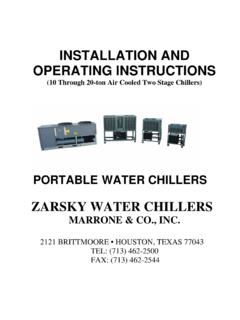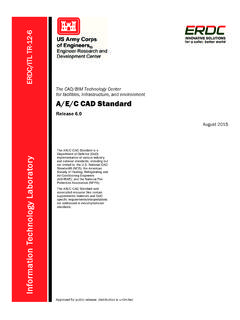Transcription of and Spool Gun Owner’s Manual - MK Products
1 And Spool Gun owner 's Manual Product: Prince XL. Manual : 091-0592. Serial: 11030001. Voltage Rating: 24 VDC. Revision: March 2011 D. Gun models: 317-XXX. 318-XXX. 319-XXX. 225 Ampere Air Cooled 255 Ampere Air Cooled ( Spool ). 450 Ampere Water Cooled Push-Pull Welding Guns Table of Contents Safety Section A. Technical Support Equipment Coolant Gun Lead Spool Gun Section B. Controls and Drive Roll and Idler C. Contact Tips ..6. Gas Barrel Barrel Optional Optional Optional Spool Gun D. Periodic Recommended Spare Parts Section E. Troubleshooting Testing the Section F. Diagrams/Parts Safety Warnings Warranty Declaration of Conformity for European Community (CE) Products Note This information is provided for units with CE certification (see rating label on unit). Manufacturer's Name: MK Products , Inc. 16882 Armstrong Ave. Irvine, CA 92606. Declares that the product: Prince XL.
2 Conforms to the following Directives and Standards: Directives Low Voltage Directive: 2006/95/EC. Electromagnetic Compatibility (EMC) Directive: 2004/108/EC. Standards Electromagnetic Compatibility, (EMC): EN 60974-10: 2007. Torches And Guns For Arc Welding, EN 60974-7: 2005. SAFETY CONSIDERATIONS. Saftey ELECTRIC ARC WELDING EQUIPMENT. CAUTION : READ BEFORE ATTEMPTING INSTALLATION, OPERATION OR. Guidelines MAINTENANCE OF THIS EQUIPMENT. 1-1 INTRODUCTION. This equipment is intended for ultimate in exposure to chemicals known to the State of Move the work if practicable, to an area free application by commercial/industrial users and for California to cause cancer and birth defects or other of combustibles. Avoid paint spray rooms, dip operation by persons trained and experienced in reproductive harm. tanks, storage areas, ventilators. If the work the use and maintenance of welding equipment.
3 Adequate ventilation. Severe discomfort, illness cannot be moved, move combustibles at least 35. Operation should not be undertaken without or death can result from fumes, vapors, heat, or feet away, out of reach of sparks and heat; or adequate training in the use of such equipment. oxygen enrichment or depletion that welding (or protect against ignition with suitable and snug- Training is available from many public and cutting) may produce. Prevent them with adequate fitting, fire-resistant covers or shields. private schools or similar facilities. ventilation. NEVER ventilate with oxygen. Walls touching combustibles on opposite sides Safe practices in the installation, operation Lead-, cadmium-, zinc-, mercury-, beryllium-bearing should not be welded on (or cut). Walls, ceilings, and maintenance of this equipment requires and similar materials, when welded or cut, may and floor near work should be protected by heat- proper training in the art, a careful study of the produce harmful concentrations of toxic fumes.
4 Resistant covers or shields. information provided with the equipment, and Adequate local exhaust ventilation must be used, Fire watcher must be standing by with suitable the use of common sense. Rules for safe use or each person in the area, as well as the operator, fire extinguishing equipment during and for some are generally provided by suppliers of welding must wear an air-supplied respirator. For beryllium, time after welding or cutting if: power sources, compressed gas suppliers, both must be used. and electrode suppliers. Careful compliance 1. Appreciable combustibles (including building with these rules will promote safe use of this Metals coated with or containing materials that emit construction) are within 35 feet. equipment. toxic fumes should not be heated unless coating 2. Appreciable combustibles are further than 35. is removed form the work surface, the area is well feet, but can be ignited by sparks.
5 The following Safety Rules cover some of the ventilated, or the operator wears an air-supplied more generally found situations. READ THEM respirator. 3. Openings (concealed or visible) in floors or CAREFULLY. In case of any doubt, obtain walls within 35 feet may expose combustibles to qualified help before proceeding. Work in a confined space only while it is being sparks. ventilated and, if necessary, while wearing an air- 1-2 GENERAL PRECAUTIONS supplied respirator. 4. Combustibles adjacent to walls, ceilings, roofs, or metal partitions can be ignited by radiant or A. Burn Prevention Gas leaks in a confined space should be avoided. conducted heat. ELECTRIC ARC WELDING PRODUCES Leaked gas in large quantities can change oxygen HIGH INTENSITY HEAT AND ULTRAVIOLET concentration dangerously. Do not bring gas Hot work permit should be obtained before RADIANT ENERGY WHICH MAY CAUSE cylinders into a confined space.
6 Operation to ensure supervisor's approval that SERIOUS AND PERMANENT EYE DAMAGE adequate precautions have been taken. Leaving confined space, shut OFF gas supply at AND WHICH MAY DAMAGE ANY EXPOSED source to prevent possible accumulation of gases After work is done, check that area is free of SKIN AREAS. in the space if downstream valves have been sparks, glowing embers, and flames. Wear helmet with safety goggles or glasses with accidentally opened or left open. Check to be sure An empty container that held combustibles, or side shields underneath, appropriate filter lenses that the space is safe before reentering it. that can produce flammable or toxic vapors when or plates (protected by clear cover glass). This Vapors from chlorinated solvents can be heated, must never be welded on or cut, unless is a must for welding or cutting (and chipping) to decomposed by the heat of the arc (or flame) to container has first been cleaned in accordance protect the eyes from radiant energy and flying form PHOSGENE, a highly toxic gas, and other with industry standards.
7 Metal. Replace cover glass when broken, pitted, lung and eye irritating Products . The ultraviolet This includes: a thorough steam or caustic or spattered. (radiant) energy of the arc can also decompose cleaning (or a solvent of liquid washing, Medical first aid and eye treatment. First aid trichloroethylene and perchloroethylene vapors depending on the combustible's solubility), facilities and a qualified first aid person should be to form phosgene. DO NOT WELD or cut where followed by purging and inerting with nitrogen or available for each shift unless medical facilities solvent vapors can be drawn into the welding or carbon dioxide, and using protective equipment. are close by for immediate treatment of flash cutting atmosphere or where the radiant energy can Water-filling just below working level may burns of the eyes and skin burns. penetrate to atmospheres containing even minute substitute for inerting.
8 Wear protective clothing - leather (or asbestos) amounts of trichloroethylene or perchloroethylene. A container with unknown contents should gauntlet gloves, hat, and high safety-toe shoes. C. Fire and Explosion Prevention be cleaned (see paragraph above). Do NOT. Button shirt collar and pocket flaps, and wear Causes of fire and explosion are: combustibles depend on sense of smell or sight to determine if cuffless trousers to avoid entry of sparks and reached by the arc, flame, flying sparks, hot slag, or it is safe to weld or cut. slag. heated material, misuse of compressed gases and Hollow castings or containers must be vented Avoid oily or greasy clothing. A spark may ignite cylinders, and short circuits. before welding or cutting. They can explode. them. BE AWARE THAT flying sparks or falling slag can Explosive atmospheres. NEVER weld or cut Flammable hair preparations should not be used pass through cracks, along pipes, through windows where the air may contain flammable dust, gas, by persons intending to weld or cut.
9 Or doors, and through wall or floor openings, out of or liquid vapors (such as gasoline). sight of the goggled operator. Sparks can fly many Hot metal such as electrode stubs and work feet. D. Compressed Gas Equipment pieces should never be handled without gloves. To prevent fires and explosion: The safe handling of compressed gas equipment Ear plugs should be worn when working on is detailed in numerous industry publications. overhead or in a confined space. A hard hat Keep equipment clean and operable, free of oil, The following general rules cover many of the should be worn when others work overhead. grease, and (in electrical parts) of metallic particles most common situations. that can cause short circuits. B. Toxic Fume Prevention If combustibles are in area, do NOT weld or cut. 1. Pressure Regulators WARNING: The use of this product may result Regulator relief valve is designed to protect only Prince XL/ Spool Gun owner 's Manual - Page i the regulator from overpressure; it is not intended 3.
10 Hose indicate leaks. Clean off soapy water after test;. to protect any downstream equipment. Provide Prohibited use. Never use hose other than that dried soap is combustible. such protection with one or more relief devices. designed for the specified gas. A general hose E. User Responsibilities Never connect a regulator to a cylinder containing identification rule is: red for fuel gas, green for Follow all Safety Rules. gas other than that for which the regulator was oxygen, and black for inert gases. Remove leaky or defective equipment from designed. Use ferrules or clamps designed for the hose (not service immediately for repair. Read and follow Remove faulty regulator from service immediately ordinary wire or other substitute) as a binding to user Manual instructions. for repair (first close cylinder valve). The connect hoses to fittings. following symptoms indicate a faulty regulator: No copper tubing splices.

